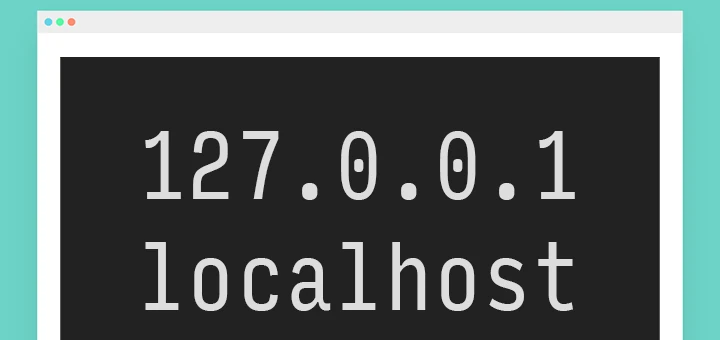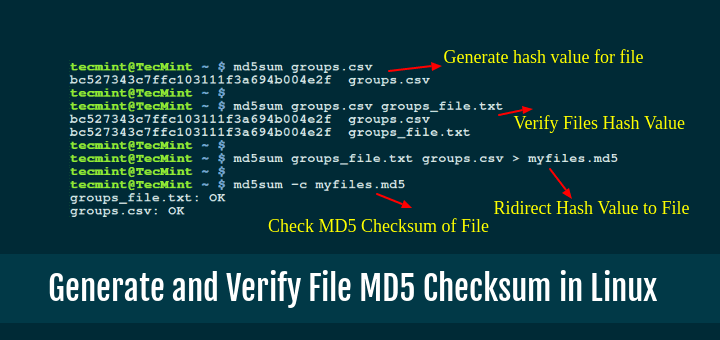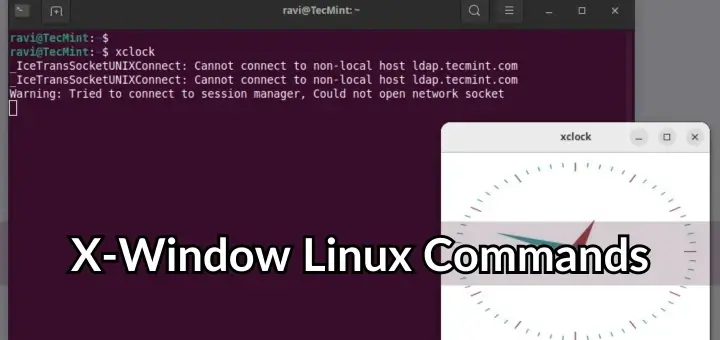We build a server according to our plan and requirements, but what are the intended functions while building a server to make it function quickly and efficiently. We all know that while installing a Linux OS, some unwanted Packages and Application gets installed automatically without the knowledge of a User.

When building a server we need to ask ourselves what we actually need from the box. Do I need a Web Server or a FTP Server, a NFS Server or a DNS Server, a Database Server or something else.
Here in this article, we will be discussing some of these unwanted applications and services which you might not needed but they are installed by default during OS installation and unknowingly start eating your system resources.
Lets first know what kind of services are running on the system using the following commands.
[avishek@tecmint]# ps ax
Sample Output
PID TTY STAT TIME COMMAND
2 ? S 0:00 [kthreadd]
3 ? S 0:00 \_ [migration/0]
4 ? S 0:09 \_ [ksoftirqd/0]
5 ? S 0:00 \_ [migration/0]
6 ? S 0:24 \_ [watchdog/0]
7 ? S 2:20 \_ [events/0]
8 ? S 0:00 \_ [cgroup]
9 ? S 0:00 \_ [khelper]
10 ? S 0:00 \_ [netns]
11 ? S 0:00 \_ [async/mgr]
12 ? S 0:00 \_ [pm]
13 ? S 0:16 \_ [sync_supers]
14 ? S 0:15 \_ [bdi-default]
15 ? S 0:00 \_ [kintegrityd/0]
16 ? S 0:49 \_ [kblockd/0]
17 ? S 0:00 \_ [kacpid]
18 ? S 0:00 \_ [kacpi_notify]
19 ? S 0:00 \_ [kacpi_hotplug]
20 ? S 0:00 \_ [ata_aux]
21 ? S 58:46 \_ [ata_sff/0]
22 ? S 0:00 \_ [ksuspend_usbd]
23 ? S 0:00 \_ [khubd]
24 ? S 0:00 \_ [kseriod]
.....
Now, let’s have a quick look at the processes accepting connection (ports) using the netstat command as shown below.
[avishek@tecmint]# netstat -lp
Sample Output
Active Internet connections (only servers) Proto Recv-Q Send-Q Local Address Foreign Address State PID/Program name tcp 0 0 *:31138 *:* LISTEN 1485/rpc.statd tcp 0 0 *:mysql *:* LISTEN 1882/mysqld tcp 0 0 *:sunrpc *:* LISTEN 1276/rpcbind tcp 0 0 *:ndmp *:* LISTEN 2375/perl tcp 0 0 *:webcache *:* LISTEN 2312/monitorix-http tcp 0 0 *:ftp *:* LISTEN 2174/vsftpd tcp 0 0 *:ssh *:* LISTEN 1623/sshd tcp 0 0 localhost:ipp *:* LISTEN 1511/cupsd tcp 0 0 localhost:smtp *:* LISTEN 2189/sendmail tcp 0 0 *:cbt *:* LISTEN 2243/java tcp 0 0 *:websm *:* LISTEN 2243/java tcp 0 0 *:nrpe *:* LISTEN 1631/xinetd tcp 0 0 *:xmltec-xmlmail *:* LISTEN 2243/java tcp 0 0 *:xmpp-client *:* LISTEN 2243/java tcp 0 0 *:hpvirtgrp *:* LISTEN 2243/java tcp 0 0 *:5229 *:* LISTEN 2243/java tcp 0 0 *:sunrpc *:* LISTEN 1276/rpcbind tcp 0 0 *:http *:* LISTEN 6439/httpd tcp 0 0 *:oracleas-https *:* LISTEN 2243/java ....
In the above output, you notice that some of the applications you may not needed on your server but they are still running as follows:
1. smbd and nmbd
smbd and nmbd are daemon of Samba Process. Do you really need to export smb share on windows or other machine. If not! why are these processes running? You can safely kill these processes and disable them from starting automatically when machine boots the next time.
2. Telnet
Do You need bidirectional interactive text-oriented communication over internet or local area network? If not! kill this process and turn-off it from starting at booting.
3. rlogin
Do you need to log in to another host over network. If not! Kill this process and disable it from starting automatically at boot.
4. rexec
The Remote Process Execution aka rexec lets you execute shell commands on a remote computer. If you don’t require to execute shell command on a remote machine, simply kill the process.
5. FTP
Do you need to transfer files from one host to another host over Internet? If not you can safely stop the service.
6. automount
Do you need to mount different file systems automatically to bring up network file system? If not! Why is this process running? Why are you letting this application to use you resource? Kill the process and disable it from starting automatically.
7. named
Do you need to run NameServer (DNS)? If not what on earth is compelling you to run this process and allow eating up your resources. Kill the running process first and then turn-off it from running it at boot.
8. lpd
lpd is the printer daemon which makes it possible to print to that server. If you don’t need to print from the server chances are your system resources are being eaten up.
9. Inetd
Are you running any inetd services? If you are running stand alone application like ssh which uses other stand alone application like Mysql, Apache, etc. then you don’t need inetd. better kill the process and disable it starting next time automatically.
10. portmap
Portmap which is an Open Network Computing Remote Procedure Call (ONC RPC) and usages daemon rpc.portmap and rpcbind. If these Processes are running, means you are running NFS server. If NFS server is running unnoticed means your system resources are being used up un-necessarily.
How to Kill a Process in Linux
In order to kill a running process in Linux, use the ‘Kill PID‘ command. But, before running Kill command, we must know the PID of the process. For example, here I want to find a PID of ‘cupsd‘ process.
[avishek@tecmint]# ps ax | grep cupsd 1511 ? Ss 0:00 cupsd -C /etc/cups/cupsd.conf
So, the PID of ‘cupsd‘ process is ‘1511‘. To kill that PID, run the following command.
[avishek@tecmint]# kill -9 1511
To find out more about kill command with their examples, read the article A Guide to Kill Command to Terminate a Process in Linux
How to Disable a Services in Linux
In Red Hat based distributions such as Fedora and CentOS, make use of a script called ‘chkconfig‘ to enable and disable the running services in Linux.
For example, lets disable the Apache web server at the system startup.
[avishek@tecmint]# chkconfig httpd off [avishek@tecmint]# chkconfig httpd --del
In Debian based distributions such as Ubuntu, Linux Mint and other Debian based distributions use a script called update-rc.d.
For example, to disable the Apache service at the system startup execute the following command. Here ‘-f’ option stands for force is mandatory.
[avishek@tecmint]# update-rc.d -f apache2 remove
After making these changes, The system next time will boot without these UN-necessary process which in-fact will be saving our system resource and the server would be more practical, fast, safe and secure.
That’s all for now. I’ll here we again with another interesting article. Till then stay tuned and connected to Tecmint. Don’t forget to provide us with your valuable feedback in comment Section.







